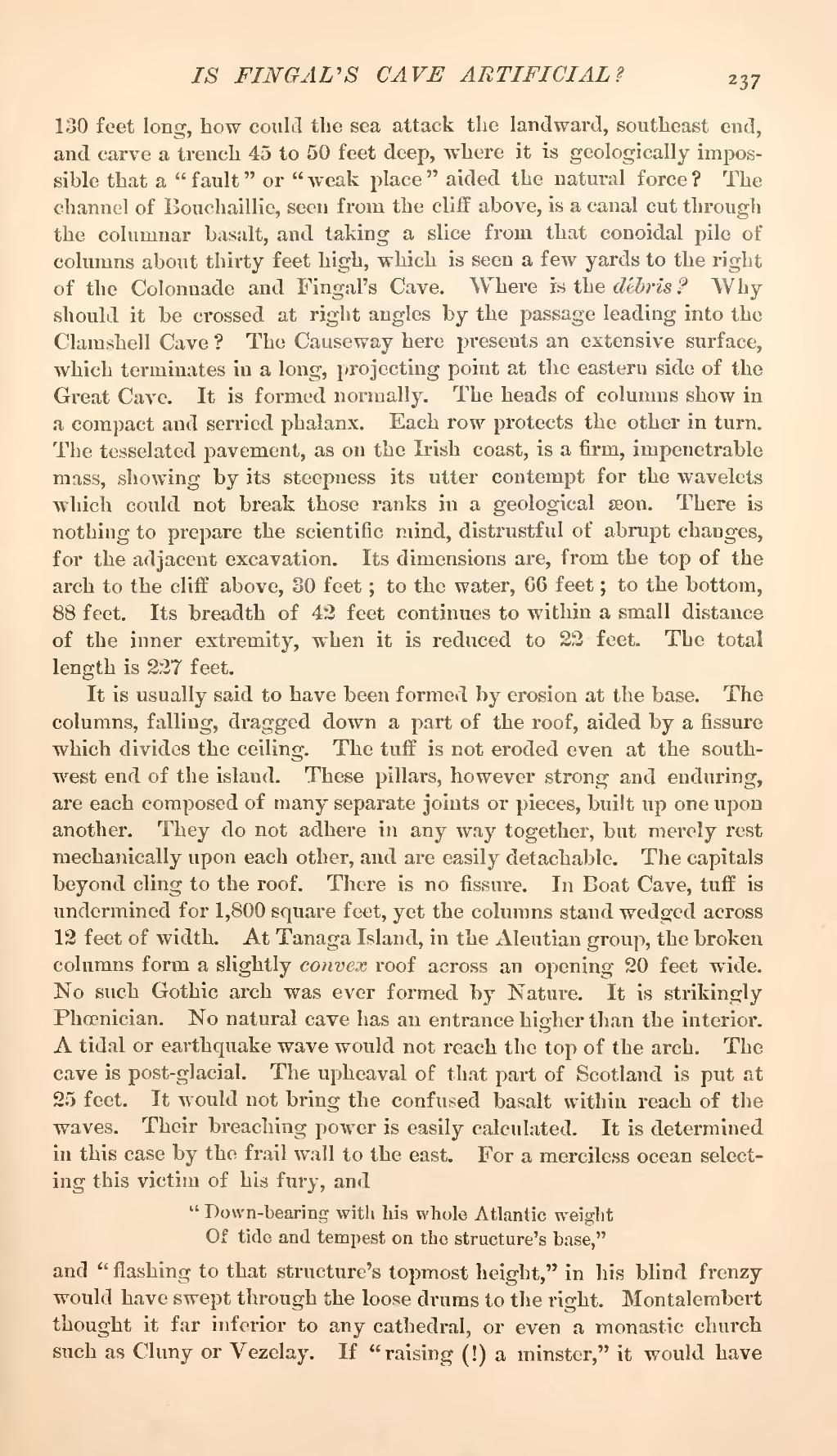130 feet long, how could the sea attack the landward, southeast end, and carve a trench 45 to 50 feet deep, where it is geologically impossible that a "fault" or "weak place" aided the natural force? The channel of Bouchaillie, seen from the cliff above, is a canal cut through the columnar basalt, and taking a slice from that conoidal pile of columns about thirty feet high, which is seen a few yards to the right of the Colonnade and Fingal's Cave. Where is the débris? Why should it be crossed at right angles by the passage leading into the Clamshell Cave? The Causeway here presents an extensive surface, which terminates in a long, projecting point at the eastern side of the Great Cave. It is formed normally. The heads of columns show in a compact and serried phalanx. Each row protects the other in turn. The tesselated pavement, as on the Irish coast, is a firm, impenetrable mass, showing by its steepness its utter contempt for the wavelets which could not break those ranks in a geological æon. There is nothing to prepare the scientific mind, distrustful of abrupt changes, for the adjacent excavation. Its dimensions are, from the top of the arch to the cliff above, 30 feet; to the water, 66 feet; to the bottom, 88 feet. Its breadth of 42 feet continues to within a small distance of the inner extremity, when it is reduced to 22 feet. The total length is 227 feet.
It is usually said to have been formed by erosion at the base. The columns, falling, dragged down a part of the roof, aided by a fissure which divides the ceiling. The tuff is not eroded even at the southwest end of the island. These pillars, however strong and enduring, are each composed of many separate joints or pieces, built up one upon another. They do not adhere in any way together, but merely rest mechanically upon each other, and are easily detachable. The capitals beyond cling to the roof. There is no fissure. In Boat Cave, tuff is undermined for 1,800 square feet, yet the columns stand wedged across 12 feet of width. At Tanaga Island, in the Aleutian group, the broken columns form a slightly convex roof across an opening 20 feet wide. No such Gothic arch was ever formed by Nature. It is strikingly Phoenician. No natural cave has an entrance higher than the interior. A tidal or earthquake wave would not reach the top of the arch. The cave is post-glacial. The upheaval of that part of Scotland is put at 25 feet. It would not bring the confused basalt within reach of the waves. Their breaching power is easily calculated. It is determined in this case by the frail wall to the east. For a merciless ocean selecting this victim of his fury, and
"Down-bearing with his whole Atlantic weight
Of tide and tempest on the structure's base,"
and "flashing to that structure's topmost height," in his blind frenzy would have swept through the loose drums to the right. Montalembert thought it far inferior to any cathedral, or even a monastic church such as Cluny or Vezelay. If "raising (!) a minster," it would have
